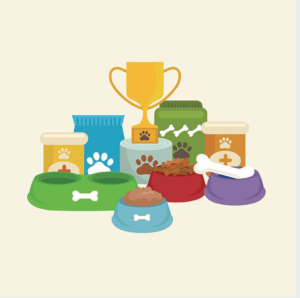Pet Food Hazards and Risk
- Home
- >
- News & Updates
- >
- Pet Food Hazards and Risk
Pet Food Hazards and Risk
You were probably looking for a follow-up blog on last week’s Pet Food Recall Hazards. My boys, Darth (cat) and Barron (dog), are pretty interested in the identification of hazards and the preventive controls for their food. Barron has a special diet due to allergies and eats Kangaroo Sweet Potato dry food. Darth’s food is special to help protect his kidneys.
The FDA has the following statement on their website relative to Pet Food sources:
A feed ingredient is a component part or constituent or any combination/mixture added to and comprising the feed. Feed ingredients might include grains, milling byproducts, added vitamins, minerals, fats/oils, and other nutritional and energy sources. Animal feeds provide a practical outlet for plant and animal byproducts not suitable for human consumption.
Just thinking about animal byproducts such as hide or skin, hair, horns, teeth, fats, bone, ligaments and cartilage, feet, glands, blood, and lungs. I have eaten gelatin (skin/hide). I am not sure about hair and horns at least not on purpose. Hair and horns can be processed into L Cysteine which is an amino acid which is used as a food additive. Hair is a fairly common customer complaint about food products, so maybe I have eaten hair. I use broth as an ingredient in several recipes. Broth can be processed by boiling teeth and bones. You have probably had trotters, sweetbreads, intestine, udders, hearts, brains, kidneys, and blood sausage, I have eaten them. Haggis is a treat in Scotland, but it is banned in the United States due to the sheep lungs. You betcha, I have had Haggis. The concern with haggis is the potential presence of the prion which causes Scrapies in sheep. Where are the Hazards? What is the Risk?
The point is that the line between inedible and edible can be small but also obvious. Animal by-products from diseased animals are inedible but are ok for Pet Food provided that the Pet Food undergoes an acceptable thermal process. You have to conduct a complete Hazard Analysis and Risk Assessment, then implement the appropriate preventive controls.
What if a disease-causing agent is nearly indestructible with heat? Bovine Spongiform encephalopathies’ prions are incredibly difficult to destroy with heat. If diseased downer animals are redirected to Pet Food, could there be a risk that dogs or cats are affected with a prion-specific disease? Yes, Darth and Barron are over ten years old and a bit goofy, so they both are concerned with this potential hazard.
Feline Spongiform Encephalopathy (FSE) is caused by prions similar to Scrapies for Sheep. It appears to be possible prions could appear in Pet Food. I do not believe that a firm link has been established through research. The question again is “What is the Risk” of this potential hazard for Pets? You would have to consider the incident rate of downer cows in the United States. The incidence rate is probably zero now. An “infection” of prions will take years to present the disease symptoms with behavioral changes, an abnormal gait, and death. You may as an owner of a Pet have problems associating a cause with the result, especially with a cat versus a dog. A firm diagnosis can only be done after the Pet is dead. Darth and Barron were not excited about this option.
So, just to be careful, you would use Share-ify to develop specifications illustrating the hazards and formally restrict the use of specific materials from downer cows. You would then utilize Share-ify to document the compliance programs and the programs are in compliance. In some situations, you need to consider the Fear factor of a Hazard in addition to the actual level of risk due to the potential business Impact. What if tomorrow, actual research established a link between Pet Food and FSE?
Share-ifyers,
Be prepared, Share-ify
Archives
- March 2025
- February 2025
- January 2025
- October 2024
- July 2024
- June 2024
- April 2024
- March 2024
- August 2023
- July 2023
- June 2023
- April 2023
- March 2023
- January 2023
- November 2022
- August 2022
- July 2022
- May 2022
- April 2022
- January 2022
- November 2021
- October 2021
- September 2021
- August 2021
- June 2021
- May 2021
- April 2021
- February 2021
- January 2021
- October 2020
- September 2020
- August 2020
- July 2020
- June 2020
- March 2020
- February 2020
- January 2020
- October 2019
- September 2019
- August 2019
- July 2019
- June 2019
- May 2019
- April 2019
- March 2019
- January 2019
- August 2018
- May 2018
- April 2018
- March 2018
- February 2018
- January 2018
- December 2017
- November 2017
- October 2017
- September 2017
- August 2017
- July 2017
- June 2017
- May 2017
- March 2017
- February 2017
- January 2017
- May 2016
- April 2016
- October 2015
- September 2015
- July 2015
- June 2015
- May 2015
- April 2015
